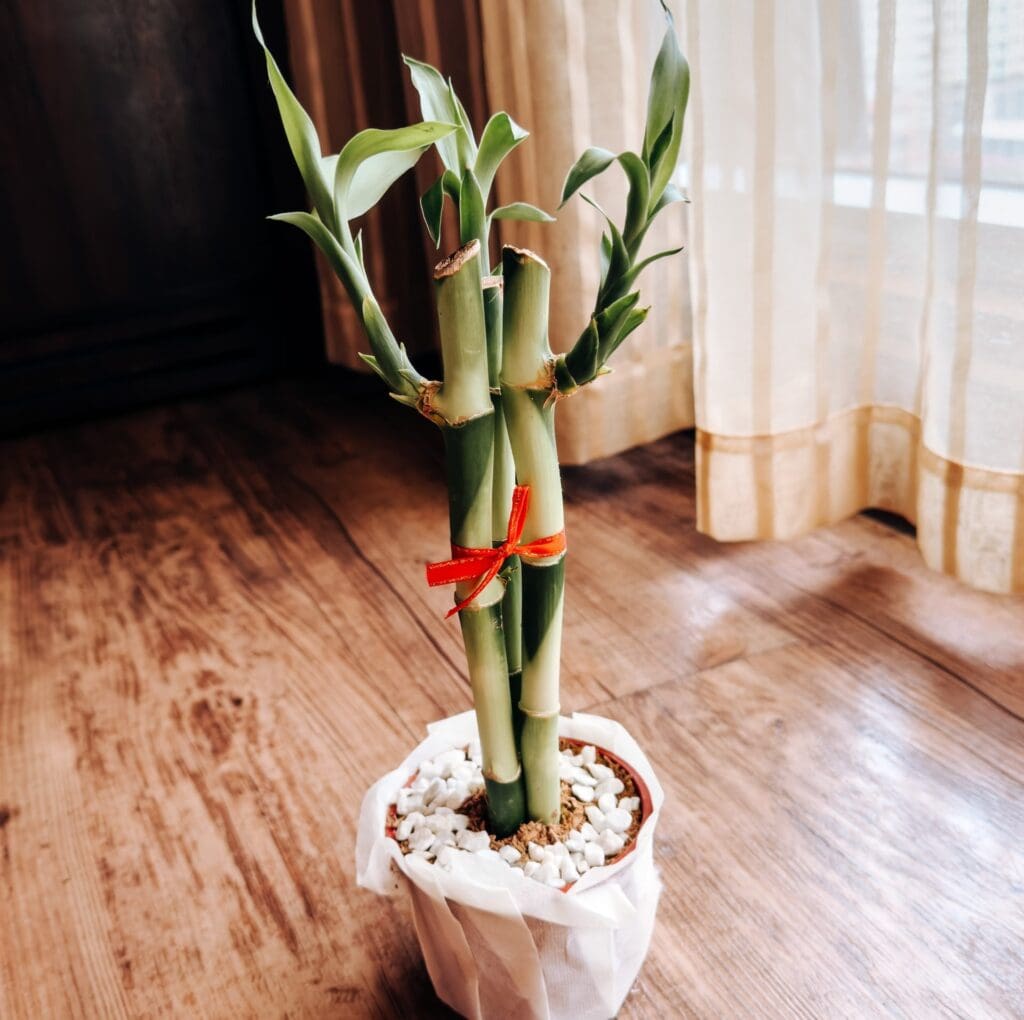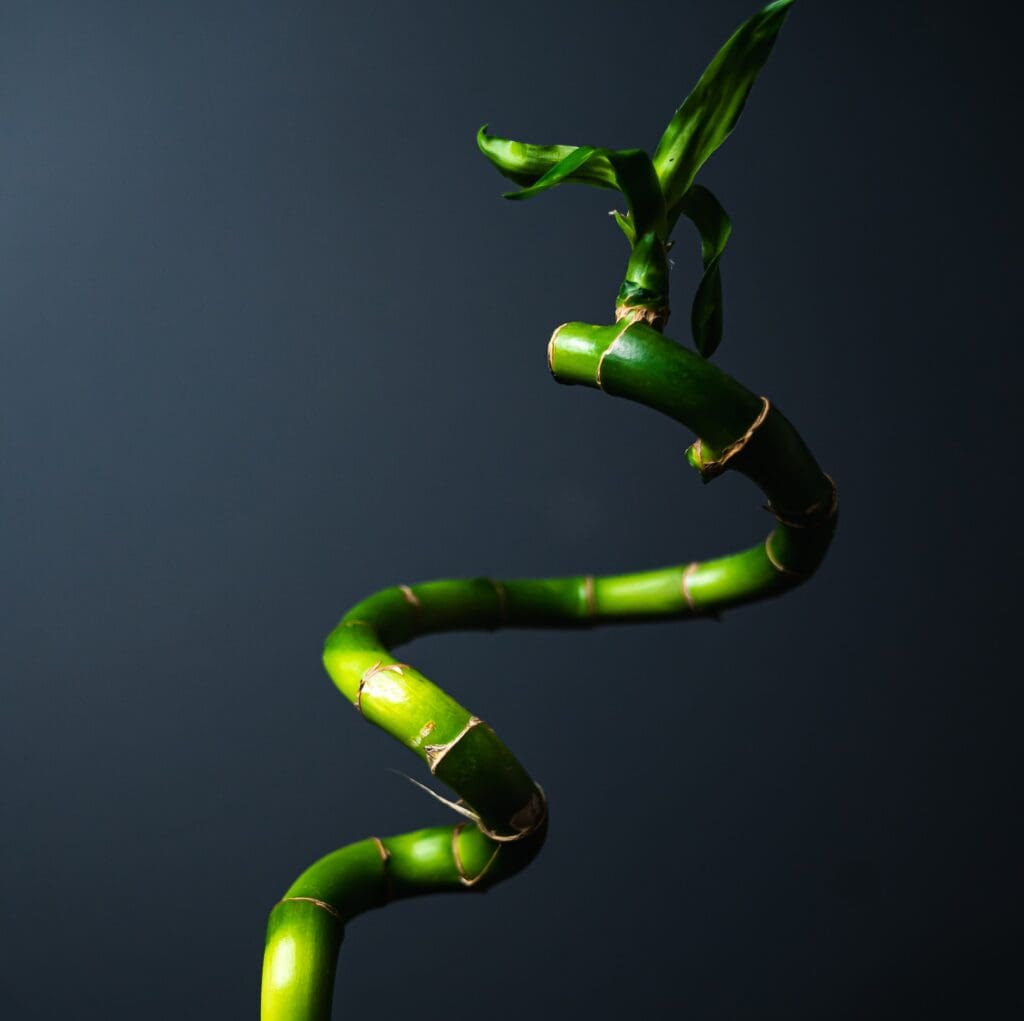Is Lucky Bamboo Poisonous To Cats?
First we need to make one thing clear. Lucky bamboo, despite its name, is not actually a type of bamboo! It is a popular indoor plant known for its slender trunks and branches. It certainly has a bamboo-like look to it. And its name.
Many people purchase this plant for its ornamental qualities and as an air purifier for their homes. However, it’s important to know that licky bamboo is poisonous to cats. If your furry friend ingests lucky bamboo, it can cause a range of mild to moderate symptoms, especially if they have pre-existing health conditions.
These symptoms may include diarrhea, vomiting, lack of appetite, drooling, loss of coordination, dilated pupils, and increased heart rate. Dehydration is also a concern due to the excessive drooling and gastrointestinal issues.
If you suspect that your cat has consumed lucky bamboo, immediate veterinary help is necessary. The vet may provide fluid therapy and perform bloodwork to treat the symptoms.
To prevent poisoning incidents like this from happening in the first place, it’s recommended to keep toxic plants out of your cat’s reach or replace them with safe alternatives.
Key Takeaways
- Lucky bamboo (Dracaena) is toxic to cats, especially the leaves.
- Reactions if a cat eats lucky bamboo can include diarrhea, vomiting, dilated pupils, increased heart rate, weakness, and incoordination.
- Serious issues from eating lucky bamboo include dehydration from diarrhea, vomiting, and excessive salivation.
- If a cat eats lucky bamboo, it is important to call the vet, provide all the facts, and follow their advice on handling the situation.
Toxicity of Lucky Bamboo
Lucky bamboo, also known as ribbon plant or cornstalk plant, is not a true bamboo but a plant species called Dracaena. It is important to be aware of its toxicity to cats. Lucky bamboo contains compounds that can be harmful to felines.

Signs of Ingestion
If your feline friend ingests lucky bamboo, you may notice signs such as lethargy, diarrhea, upset stomach, lack of appetite, and excessive drooling. Lucky bamboo contains toxins that can have adverse effects on cats. It’s important to understand the potential toxicity and take appropriate measures to ensure your cat’s well-being.
Treatment options for lucky bamboo ingestion may include gastric lavage within two hours of ingestion to remove the plant from the stomach and IV therapy to keep the cat hydrated and prevent kidney damage. Lingering effects or long-term care may be necessary depending on the severity of the poisoning.
Other Symptoms of Poisoning
Other symptoms of poisoning include loss of coordination, with stumbling or leaning to one side. This suggests that the toxic compounds in lucky bamboo have affected the cat’s nervous system. Veterinary advice should be sought immediately if you observe this sign in your cat.
It is important to note that while some cats may recover from lucky bamboo poisoning within 24 hours, there may still be long-term effects to consider. In severe cases or if the cat has ingested a large amount of the plant, there is a risk of kidney damage and other complications. Therefore, prompt veterinary intervention is crucial for proper diagnosis and treatment.
A veterinary toxicologist or specialist in toxicology can provide comprehensive analysis and guidance based on scientific research and evidence when dealing with potential toxicity issues related to plants like lucky bamboo.
Immediate Treatment
If you observe symptoms of lucky bamboo ingestion in your cat, seek immediate veterinary care. Prompt treatment is crucial for their well-being due to the toxins present in lucky bamboo. Taking action quickly can help minimize potential damage. A veterinarian may recommend the following emergency treatments for lucky bamboo poisoning:
- Gastric lavage: This procedure involves flushing the stomach with a solution to remove any remaining plant material.
- IV therapy: Intravenous fluids may be administered to keep the cat hydrated and prevent kidney damage.
These interventions aim to minimize toxin absorption and support the cat’s overall health during this critical time.
Remember, professional veterinary care is essential in cases of lucky bamboo ingestion. Don’t hesitate to seek help from a trained veterinarian.
Prevention of Ingestion
To minimize the risk of ingestion, you can take proactive measures to safeguard your feline companion from potential harm caused by toxic plants like lucky bamboo.
A veterinary toxicologist or specialist in toxicology would inform you that lucky bamboo contains specific toxins or compounds that can be harmful to cats. These professionals rely on scientific research and empirical evidence to support their claims.



Lucky bamboo is toxic to cats, and it’s important to prevent them from ingesting it. To do so, you can provide cat-friendly alternatives, such as safe plants for them to nibble on.
Additionally, hiding the lucky bamboo in a location where your cat cannot see or access it is recommended. Deterrent methods like using strong-smelling substances such as vinegar or garlic paste can also help keep cats away from the plant.
By implementing these prevention techniques, you can ensure the safety and well-being of your beloved feline friend.
Conclusion
In conclusion, lucky bamboo is indeed poisonous to cats and can cause a range of symptoms from mild to moderate. Cats that have ingested lucky bamboo may experience diarrhea, vomiting, lack of appetite, drooling, loss of coordination, dilated pupils, increased heart rate, and dehydration. Immediate veterinary assistance is necessary in these cases.
It is crucial to keep toxic plants out of a cat’s reach or replace them with safe alternatives to prevent poisoning incidents. This conclusion is based on the precise and technical language used by veterinary toxicologists and specialists in toxicology who rely on evidence-based research and provide comprehensive analysis on the topic.

